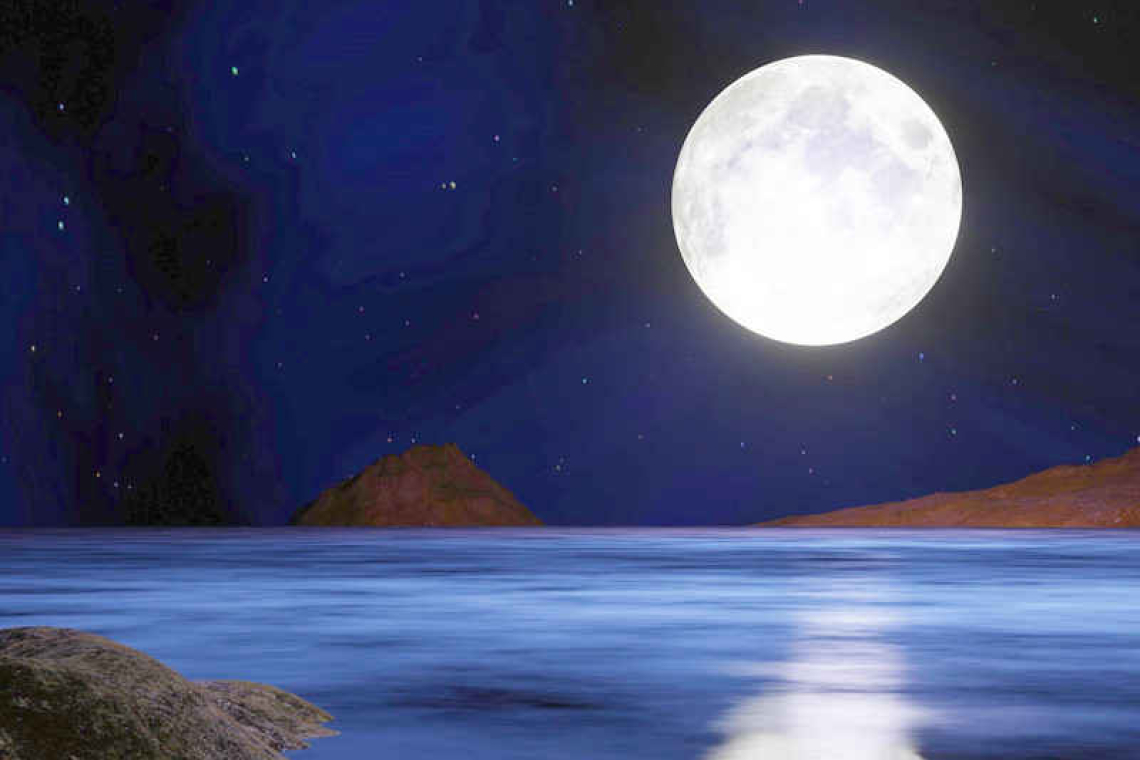~ St. Maarten’s Backyard Astronomy for February 23 - 25 ~
Sun rises at 6:34am
Sun sets at 6:16pm
Lunar phase: Full Moon
Moon sets at 6:44am Saturday morning
Moon rises at 6:33pm Saturday night
This weekend, we will be blessed with a full moon – the Snow Moon of February. Full moons are known for bringing out the love. So if your romantic frame of mind is lingering after last week’s Valentine’s Day, this weekend will be just the thing!
This year, we will have quite a few super full moons, but this one is just the opposite; it’s a micro-moon! It is particularly far from Earth. Its farthest point, called the apogee, is typically stated as 240,000 miles (386,242 kilometres). This weekend’s full moon will be 252,225 miles (405,917 kilometres). Compare that to the average distance between Earth and the moon, 238,900 miles (384,472 kilometres). The February full moon is 2024’s farthest – and only – full micro-moon this year. Don’t be discouraged, though, because the difference is almost imperceptible, and watching the full moon rise over the eastern horizon is sure to be an awe-inspiring sight.
The wonderful thing about a full moon is that although it is perfectly round on the day it reaches the crest of its full phase, the nights immediately before and after also offer us a moon that certainly appears round. So, the rising moons on February 23 and 25 will also appear full. That gives you more time to appreciate the beauty of our universe.
While you do that, consider that the full moon always rises at sunset and sets at sunrise. In fact, that is why it is full, the moon and sun are in what astronomers call “opposition” – meaning they are on opposite sides of the sky, which is why we see the fully lit up face of the moon. It’s a geometric relationship that has been understood by sky watchers from the vastness of history, but is often lost on us modern humans.
Another point of interest this weekend is the planet Jupiter, which is high in the southern sky at sunset; and as the full moon rises, Jupiter will be seen as sinking to the western horizon. By around midnight, Jupiter will have set, but other bright stars will still be visible, even against the brilliance of a full moon. Look for the stars of the Winter Circle (discussed in detail in the last Weekender) including Sirius, Aldebaran and Procyon. Closer to the southern horizon, you may detect Canopus and the stars of the famous Southern Cross.
Thank you for keeping up with the Night Sky articles, backyard astronomy designed for St. Maarten sky viewing. FYI: If you are out later on in the week, note that each star rises about four minutes earlier each day than written here, and the moon rises 50 minutes later. Night Sky is researched and compiled by Lisa Davis-Burnett. Earthsky.org is a key resource for information and images. Questions or comments? Email This email address is being protected from spambots. You need JavaScript enabled to view it.







